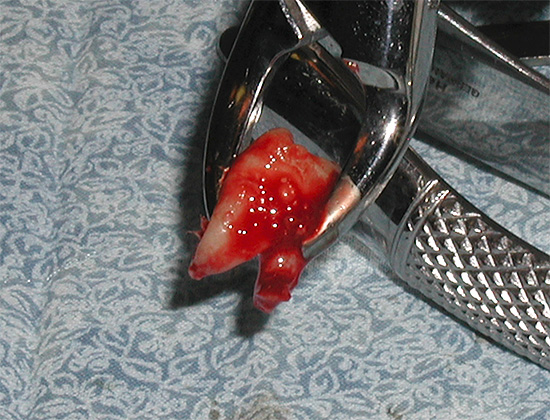
Next you will learn:
- How is the removal of wisdom teeth in the upper jaw;
- Interesting nuances of removing a hidden wisdom tooth (retini);
- Unpleasant complications that sometimes occur directly during the procedure;
- As well as approximate prices for the removal of wisdom teeth in various dental institutions.
As practice shows, the very fact of the forthcoming removal of the wisdom tooth often causes panic in some people. Some patients wise by the Soviet past imagine this procedure in such a way that the dentist-surgeon will use them in an old fashion with a chisel and hammer to hollow out the roots for more than an hour, taking them in pieces from the torn bleeding gums ...
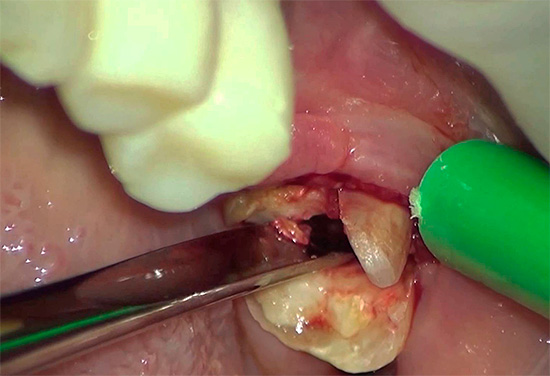
Well, we hasten to please you - in fact, the procedure for removing wisdom teeth today usually goes much simpler and not as scary as described above. Although in fairness it’s worth saying that there is some truth in such fears, since the upper wisdom teeth of each person have their own unique structure and location in the jaw, which sometimes complicates their removal.
Due to the fact that the wisdom tooth erupts the very last, often at the end of the dental arch there simply is no room for it. With a close arrangement of teeth and a small upper jaw, the upper wisdom tooth (eighth) may not begin to erupt at all for a long time, resting the crown part on the adjacent seventh. In this case, serious problems often arise: pain, swelling of the gums and cheeks, and all this leads to the fact that a complex removal of the wisdom tooth on the upper jaw is carried out, about which we will talk more interesting and important nuances in more detail below.
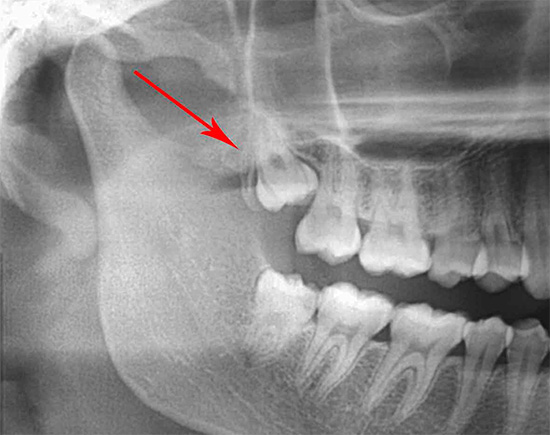
Feedback
“I was not lucky at all, the doctor said that he wouldn’t tear it out, but cut it out, because the seven are not there, and the wisdom tooth is hidden under the gum and presses against the six. I have a panic, I'm generally afraid of dentists! It’s clear that with anesthesia, but he’ll cut a piece of gum there for me! And then he also said that he would put the implant - they would drill my jaw, and then they would screw the screw directly into the bone. Oh, girls, how would you not die there ... "
Varvara, Kirov region
Fortunately, difficult teething of the 8th tooth from above is extremely rare (compared to the wisdom teeth in the lower jaw), so its removal in practice in most cases is not difficult for the dentist surgeon.
As usual, the removal of the upper wisdom teeth
Removing a wisdom tooth in the upper jaw is usually not difficult in the following cases:
- A tooth has one or more roots merged together;
- The root is almost straight and not too long;
- The crown part is completely or 90% above the level of the gums, which makes it possible for it to be tightly covered with forceps.
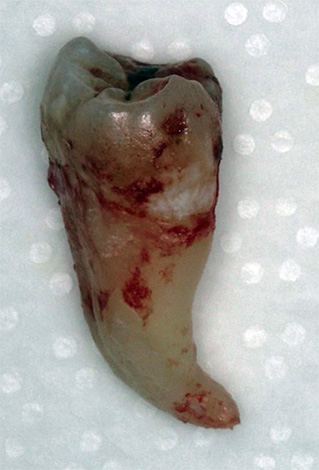
In such cases, we are talking about simple removal - that is, removal using forceps.
The structure of the forceps to remove the 8 tooth from above has its own characteristics associated with the difficulty of access to it. Often, a dental surgeon has to deal with decayed wisdom teeth in the upper jaw, so bayonet forceps are used to dislodge them from the hole, which are ideal for this.
It is interesting
Dental surgeons use bayonet forceps quite often, since they have a special configuration, very convenient for removing the roots of distant molars. The cheeks of these forceps are pointed to improve fixation of the removed root and completely close, unlike forceps for tooth extraction with a preserved crown.
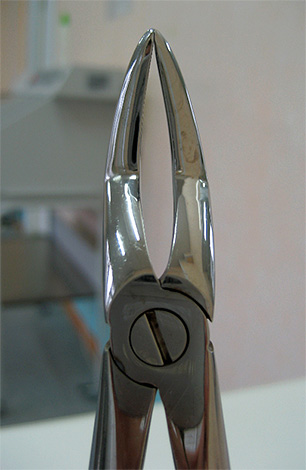
Bayonet forceps are used not only to remove the roots of the 8th tooth on the upper jaw, but also the sixth, seventh upper, and often the “capricious” roots of the five and four. With special skill with these tools, it is possible to remove the root and upper front tooth, for example, a central incisor. Dental surgeons love and value these forceps for their versatility and ease of use.
Dentist review
“I have been working as a dental surgeon for about 15 years and cannot imagine my practice without bayonet forceps. One time I had to start in a remote village, a person for 500-800 people. In the hospital there I was in great demand not only among the local population, but neighboring villages often came to me to remove one or several teeth at once, since before that they had not had a dentist for more than 3 years. It was generally weak with tools: only 15 pieces of forceps (and several elevators) per doctor’s shift, and of these there were most of all bayonet-shaped forceps to remove the upper roots of wisdom teeth, molars, premolars, canines and incisors.
More than 10 people often arrived on the day, and at the end of the shift there was nothing left - 3-4 instruments of one kind. Then the savvy helped me out: bayonet-shaped forceps were ideally suited not only to remove teeth with a preserved crown, but also to remove almost any lower tooth. To do this, the back of the patient’s chair fell to such a level that the head was thrown back, and I approached from behind, and it turned out that the lower jaw began to be located at the top, so with the bayonet-shaped forceps remaining at the end of the shift, any not-so-difficult tooth on the lower jaw could be removed. Now I don’t use the product of my ingenuity, because I have more than enough tools, but for the military field conditions it’s a great option. ”
Alexey, dental surgeon, Norilsk
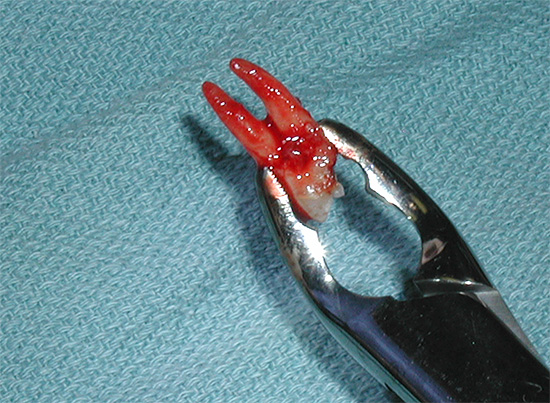
Before surgery, the dentist-surgeon most often takes an X-ray of the wisdom tooth to be removed, as this allows you to predict what the removal is (simple or complex), and also prevents a number of serious complications (for example, maxillary sinus perforation, damage to an adjacent tooth, etc. .d.). After that, the patient is questioned for the presence of concomitant pathologies (history taking), examination of the tooth and selection of the necessary set of instruments, removal of plaque from the extracted tooth and antiseptic treatment of the oral cavity in the form of rinses - for further prevention of suppuration of the socket in the future. Then high-quality anesthesia is performed.
The main stages of simple removal of the upper wisdom tooth:
- The application of forceps on the crown or root located in the hole;
- The advancement of the forceps cheeks is a little deeper;
- Fixation;
- Luxation (rocking) of the tooth in the direction of least resistance - in the outer (to the cheek);
- Traction (extraction from the hole);
- Hemostasis - stopping bleeding from a hole by applying a sterile gauze swab and pressing it firmly against the wound with opposing teeth.
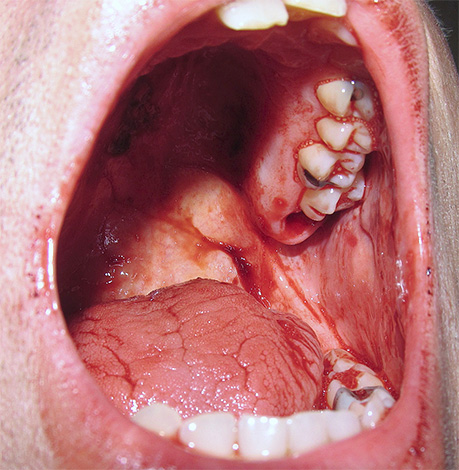
After completing the removal procedure, the dentist-surgeon gives valuable recommendations to the patient on the care of the postoperative wound: what can and cannot be done, what drugs to use, how many days, etc.
Features of the removal of semi-reinforced and retinirovannye upper wisdom teeth
As mentioned above, there is often not enough space in the dentition for the wisdom teeth of the upper jaw. Every dentist in practice almost every day sees an unusual arrangement of the top eight - the so-called dystopia.
The wrong position in relation to the dentition most often looks as follows: during eruption, the tooth deviates strongly towards the cheek and sometimes even begins to injure its mucous membrane during chewing. In old age, this is especially dangerous, since long-term non-healing wounds ulcerate and can cause the development of a tumor process.Therefore, it is important to diagnose such a tooth in time and immediately remove it.
Sometimes due to a lack of free space in the jaw or improper location (for example, a strong inclination towards the 7th tooth), the upper wisdom tooth may partially cut through (half-fused) or may not appear at all on the gum surface (retiniated). In such cases, the question arises: should it be urgently removed?
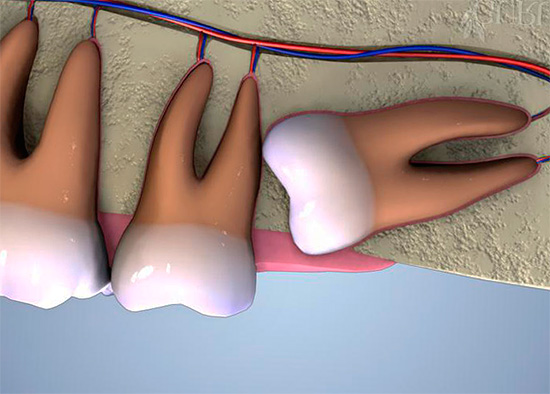
To solve the issue of removing a semi-reinforced and retinirovannogo wisdom tooth in the upper jaw are suitable from a professional position: if the tooth does not cause concern and does not pose a clear threat of complications in the future, then it is usually not touched, but dynamic monitoring is performed at least 1-2 times a year.
It's important to know:
A refined tooth must be removed urgently if there is pain, inflammation, or when a follicular (tooth-containing) cyst forms around it.
Before removing the 8th tooth from above (as well as the 6th, 7th, 5th, and 4th), an x-ray is analyzed to determine the boundaries of the maxillary sinus with respect to the roots of the tooth: the closer the location, the greater the risk of perforation or perforation.
Now let's see what stages of the removal of the retarded upper wisdom teeth can be waiting for you in the dentist’s office:
- Local anesthesia;
- Incision of the gums with a scalpel and flaking of the flap;
- Bone tissue resection with tips and special milling cutters at low revs with cooling so that there is no bone necrosis (if the retined tooth is not surrounded by bone tissue, then it will not be necessary to cut it out);
- Removing a tooth in parts or in whole using elevators or forceps;
- Curettage of the hole and washing with antiseptics;
- Bone wound repair with biomaterials (autobone, hydroxyapatite, tricalcium phosphate);
- The return of the mucous flap to its original place and suturing;
- Stop bleeding from the hole;
- Recommendations for the care of postoperative wounds.
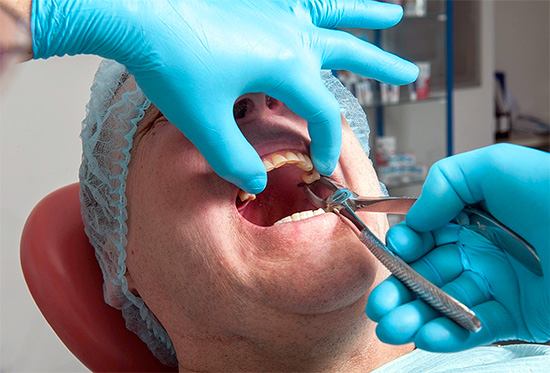
Comment of the surgeon
Many doctors, for the convenience of removing the retarded wisdom tooth in the upper jaw, practice dividing it in parts, but it is best to refuse this stage and try to carefully select the entire tooth from the hole. This is due to the fact that the roots can be close to the maxillary sinus, and the separation of the roots (and even more so their hollowing out) can cause the tooth to “sink” into the sinus, and getting it out of there later can be very problematic.
Anesthesia or local anesthesia - what to prefer?
What anesthesia can be used to remove the upper wisdom tooth: general (anesthesia) or local? This question worries many people who have this procedure.
Anesthesia during tooth extraction It has certain advantages, as it allows you to transfer all the most “scary” manipulations with a disabled consciousness. However, anesthesia is not without its drawbacks: specific preparation for it, increased cost of the entire procedure, sometimes unpleasant sensations after it. In addition, there are cases when, after anesthesia, people didn’t wake up at all, as there are a number of diseases that determine the risks of a resuscitation situation during a doctor’s work.
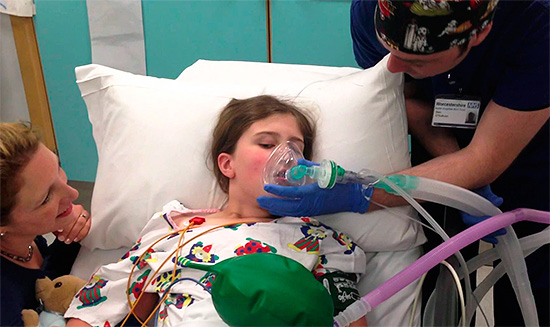
Therefore, most often the upper wisdom tooth is removed under local anesthesia. Highly effective anesthetics of the Articaine series are usually used, as a result of which there are practically no problems with poor “freezing”.
On a note
The upper wisdom teeth are surrounded by a thin cortical plate, which has small openings for the exit of blood vessels and nerves. That is why, in comparison with the teeth of a massive and dense lower jaw, the upper teeth (including the wisdom tooth) “anesthetize” is not difficult.
Most often, infiltration anesthesia is done, in which the anesthetic solution is injected into the transitional fold (into the projection of the roots of the wisdom tooth on the gum). Sometimes they carry out the technique of tubular and palatine anesthesia - with the failure of the first.
To increase the duration of the “freezing” action, adrenaline or norepinephrine (vasoconstrictors) are added to the anesthetic, which, as a vasoconstrictor, reduce the rate of resorption of the anesthetic, thereby keeping it in the working area for a long time. As a rule, the duration of action of drugs with a dilution of adrenaline of 1: 100 000 allows for painless tooth extraction for about 1 hour.
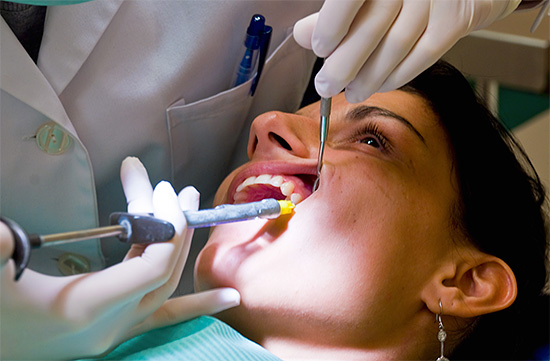
In case of intolerance to local anesthetic, panic fear of surgery, mental disorders of the patient, the duration and high morbidity of the upcoming intervention, etc. removal of a wisdom tooth is performed under general anesthesia.
What complications can occur directly during the removal of the upper wisdom tooth
Despite the fact that the upper wisdom teeth are most often not difficult to remove, in certain cases serious problems still arise, leading to complications during the intervention. Moreover, in 90% of cases they are associated with unprofessionalism and the rough work of a dental surgeon.
It is interesting
When removing any tooth, the use of brute force by the doctor is exclusively contraindicated. There is a well-known myth that a huge inflated male surgeon will cope with removal better than a small slender young lady dentist. However, in practice it turns out that it is she who will fulfill the task better.
Competent dentists with great experience know that the removal is carried out primarily not with forceps, but with hands. Nippers (and other instruments) are just a continuation of the surgeon's hands, and where the hands are, a competent head should also be attached. During removal, excessive force is not used, but the well-known principle of leverage is used, supported by accuracy and experience. If during the tooth extraction “does not go”, then there is no point in leaning on the tongs to make the work faster. At the moment, there are other optimal methods (except for forceps and elevators) to extract a tooth without the risk of complications during surgery.
So, we list the main complications that can occur during the removal of a wisdom tooth in the upper jaw:
- Fracture of the crown or root of the extracted tooth. It occurs when the crown or root is significantly destroyed by the carious process, and the applied forceps squeeze them with uncontrolled force. In this case, a “crunch” and “crackle” usually arise, frightening the patient and forcing him to spit with the remnants of the tooth being removed. Prevention of this complication consists in the accuracy and control of the degree of forceps pressure on the trapped tooth, as well as in the depth of its grip (the deeper the cheeks are extended under the gum - the less is the risk that a crown or root fracture will occur).
- Fracture and dislocation of an adjacent tooth. This complication does not occur often, but is also associated with the use of force and a small doctor’s experience. When working with elevators, the dentist-surgeon can choose a weak, single adjacent tooth as a support and, if the working technique is violated, fracture or dislocate it. Therefore, it is important that there is at least one other adjacent tooth next to the abutment.

- Damage to the gums and other soft tissues of the oral cavity. This complication occurs quite often, especially during complex removal. Often, soft tissue damage is caused by the complexity of the location of the wisdom tooth (this can affect both the upper and lower jaw) and the difficulty of removing it, when all the doctor’s attention is directed to the tooth being removed, and soft tissue breaks are ignored. Damage can occur when the tool slips off, and the doctor can simply tear the corners of the patient’s mouth, trying to get better access to the extracted tooth. To prevent such complications, it is important for the doctor to learn how to control his actions as much as possible.
- Pushing the root into the surrounding soft tissue. During rough work with the elevator, sometimes the root moves under the gum, and attempts to grab it sometimes lead to pushing the root even deeper.Therefore, the doctor subsequently has to dissect the gum above him in order to freely remove the problematic piece of tooth. Prevention of complications is the same accuracy in work and utmost care.
- Fracture of the site of the alveolar process - occurs when the cheeks grab the forceps of the extracted tooth too deeply, when they overlap also on the part of the alveolar process. This complication usually does not lead to impaired healing of the hole, however, the sharp edges of the damaged bone should be smoothed, for example, with bone nippers (for the prevention of inflammation of the hole - alveolitis).
- Perforation of the bottom of the maxillary sinus. Currently, due to compulsory radiography before the removal of a wisdom tooth this complication It is not so common, but it is one of the most unpleasant in every sense (see review below). Prevention is: X-ray control before removal, not the use of excessive force by the doctor towards the removed root or part of the tooth, as well as good knowledge of the anatomy of the upper jaw.
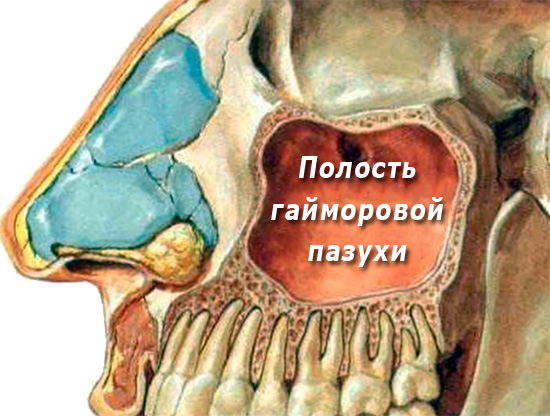
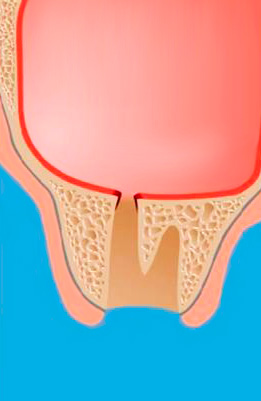
Feedback
“Yesterday I removed the upper wisdom tooth in our local clinic near the house. They froze the gum and pulled it well, just sat for 3-4 minutes in an armchair. I came home, took a pill of Ketorol and after a couple of hours decided to have something to eat. Mom’s chicken noodle soup was on hand. As soon as I started wrapping it up, soup began to flow out of my nose! At first I didn’t even understand, I thought it was a runny nose. But it was soup! Horror, I almost crashed out of my chair. For about 15 minutes I sat like that, and then I realized that it was somehow connected with a hole in my mouth from my former wisdom tooth. I immediately let go in the direction of the clinic where a tooth was pulled out a few hours ago. It turned out that my hole in the gum communicates with the nasal cavity, so the food flows through the nose. I asked the doctor to close up the hole for me, to which she replied that they didn’t do such operations. Well, actually, I almost died with fear, when I almost crawled out pasta from my nose, and she screwed up and can't say anything can be done. I had to go to another private clinic, where I was kindly sewn for five thousand. Now nothing comes from the nose. In theory, it’s not a pity for money, it’s a shame that the clinic does not understand what’s going on: they’ll do business in the bushes. Where the world is headed! ”
Nastya, Nizhnevartovsk
The approximate cost of removing the upper "wise" teeth
Depending on the level of the dental organization, the prices for removing a wisdom tooth can vary from absolutely free removal by compulsory medical insurance to about 5-10 thousand rubles.
The main advantage of a budgetary institution (and, perhaps, the only one) is the low price for the service - they often remove their teeth here for free, but often the procedure is performed with domestic anesthetics, which are not very effective, and in addition are toxic and allergenic. In addition, you have to sit long lines. Not all hospitals and clinics will take up the complicated upper wisdom tooth, but will be sent to another hospital or even to a private clinic - due to lack of equipment, tools, experience or lack of desire to mess with you for a long time, etc.
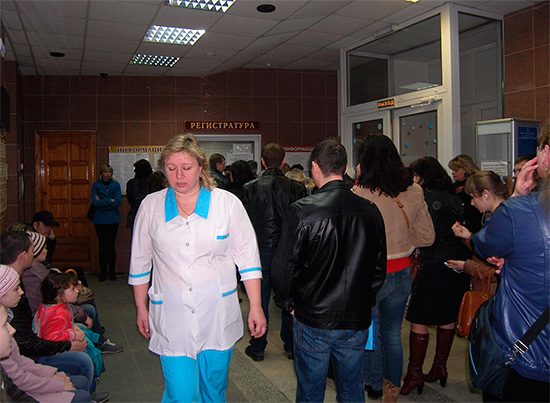
The advantage of a private blade is an individual approach to each of its patients (although there are also private dentistry, where they practice conveyor technique). An important drawback of many private organizations is that the price lists do not focus on simple and complex removal, but simply on the wisdom tooth. That is why not the most honest dentists even make a whole ritual out of simply removing a wisdom tooth: with preparation, acting playing complex removal with long conversations after that the extracted tooth had unusual roots that were miraculously managed to pick up so neatly, and this is the merit of the dentist -professional ...
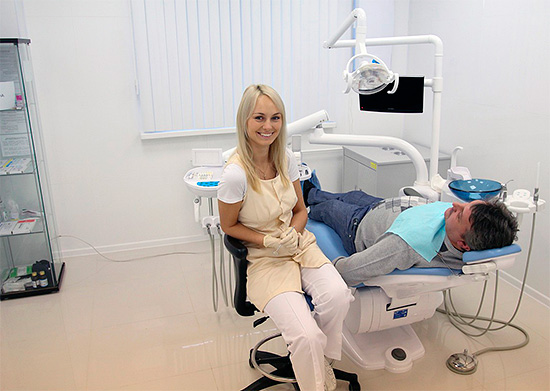
Unfortunately, not a single person is safe from overwhelming for such types of services, but there are some tips that will help you avoid meeting with such doctors. Before contacting a dentist-surgeon for removing a wisdom tooth, you should "monitor" the clinic and its specialists: ask relatives and friends, find reviews, find out the long-term results of "experienced" ones, etc. All this will allow you to find the dental surgeon who will perform the removal of the wisdom tooth professionally and at a real market price, without pathos and excessive markup.
Interesting video: an example of atraumatic extraction of a wisdom tooth in the upper jaw
About some problems that may occur after tooth extraction

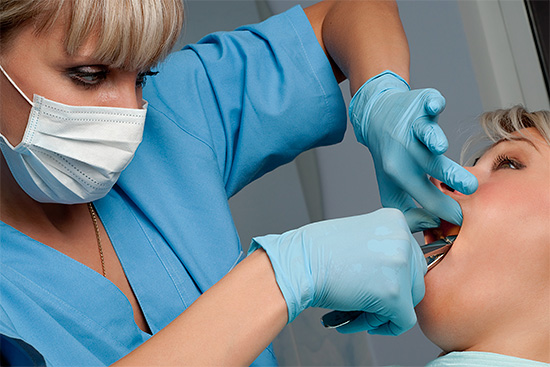
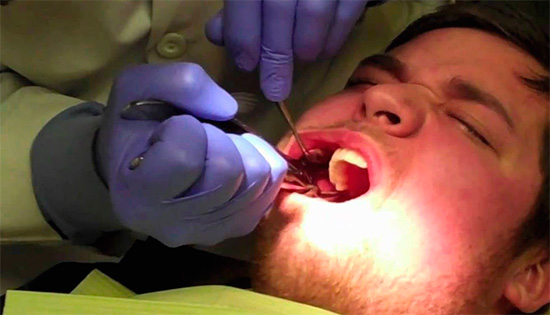
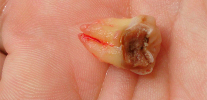
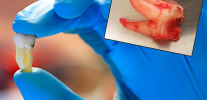
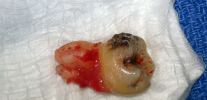
Please tell me, a wisdom tooth was removed and a year later a tooth was removed next to it (it turns out, 8 and 7 teeth) on the upper left side. The rest of the teeth seem to have everything. Asymmetry of the face will be?
Hello! I think that there is no risk due to the fact that 7 teeth are almost always not prosthetized when it comes to an end defect. Each tooth, of course, is important for the continuity of the dentition, but only starting from the 6th tooth to the first (central incisor), when they are lost, we are already talking about possible deformations of the maxillofacial region, in particular, asymmetry. So for now, don’t worry.
Please tell me, you need to remove the two retained wisdom teeth (upper right and lower left). Can two at once? If the problem is only nutrition, then this is not a problem. A month ago, the lower right retained figure eight was removed.
Hello! If there is no urgent need, and for certain reasons the deadlines are not running out, it is best not to do this. Firstly, the removal of the retained teeth often takes more than 1 hour, so removing two teeth at once is morally difficult. Secondly, the fact of surgery in different areas of the jaw will determine two wounds in the oral cavity, which will create risks for not very comfortable healing, although this is not always the case. In a planned manner, I would not advise you to remove two teeth at once, although the last word is for your treating maxillofacial surgeon or dental surgeon. If he takes responsibility, then there will be no mistake, in principle. Moreover, a professional can remove two retained teeth in 30-40 minutes without consequences. A correctly prescribed postoperative treatment allows you to make the healing of even two holes as comfortable as possible.
Hello! Tell me, is it normal that the doctor tried for 2 hours to remove the upper retarded 8-ku, as a result, as he said, the tooth did not succumb at all, the doctor sutured the gum (along with the tooth not removed) and said that it should be removed under general anesthesia. He tried to drill it, but the tooth itself, according to him, is intact. According to the doctor, there should not be any consequences, inflammation, is this so? And where to find a really good surgeon who can carry out complex removal, although now it’s very scary to think about re-execution ...
Hello! From the point of view of logic, the dentist did nothing shameful (unless, of course, he donated money for useless work). He honestly told you that he could not cope with the task - I am more than sure that he was tormented with a tooth in 2 hours, it is possible that there were not enough special tools and (or) skills for such deletions.
I can fully assume that during the work the doctor found a large distance to the retined tooth, considered that he could break wood, therefore, foreseeing even greater trauma for the future, he suggested you remove the tooth under anesthesia, since anesthesia gives you the opportunity to have a number of advantages in such operations .
It is worthy of respect that the doctor did not conceal information from you, did not throw a wound, but sutured it, piled his face over you for two hours and gave quite practical advice: well, if he cannot do his (in this case, very difficult) work , what is it now, to dismiss something for this? If the doctors of general surgeons, who at least 1-2 times a year do not cope in difficult situations, are fired, then 100% there will not be a single doctor who could help millions of people every year.
The last question puzzled me. Based on ignorance of the location (where you are from), I can answer that you should look for a maxillofacial surgeon, preferably an assistant professor or professor at a medical institute that has significantly more experience with such deletions. This is an option that will certainly help. Professors can do the job expensively, but in less time, unless, of course, these are rusted theorists.
Hello, I have such a problem: the upper seventh teeth grow on the gum, I don’t feel any discomfort, but now the wisdom tooth is climbing, which also grows on the gum. Is this fraught with consequences?
Hello! Upper wisdom teeth almost never cause problems. Exceptions are cases when an adjacent tooth interferes with them. So the likelihood of something very bad is very small compared to the same situations, but on the lower jaw.
However, sometimes the upper teeth of wisdom erupt laterally, “crookedly”, and at the same time cause a bite of the cheek. This is a negative point - in such situations it is usually better to remove the wisdom tooth in order to avoid consequences. You write that the tooth grows “on the gum” - mean that “exactly”? If so, then I think that he will take his normal location and will not cause you any trouble.
Hello! The upper teeth of wisdom, the left began to crumble on the side, there is no pain. I went to the hospital, the doctor examined, said that he could not remove him. A year passed, a third of the tooth broke off. I made an appointment with the clinic, for a visit in a week. The right tooth began to crumble 6 months ago, also on the side - the whole tooth, only a hole on the side. If you tighten with removal, then after you have to do everything under general anesthesia, as I understand it? And at what interval is it possible to remove them without complications? Thanks in advance!
Hello! The upper wisdom teeth in the vast majority of cases are easily removed. Complex removal of the upper eighth teeth is rare. To confirm the complexity, from the point of view of the anatomy of the roots, a picture is taken before removal. Branched roots bent at different angles are found in 1-3% of cases, and in some regions of Russia - even less often. Personally, over 10 years of work, I have encountered only 4-5 times with complex upper wisdom teeth (although I have already removed several hundred of them).
If your doctor did not begin to remove the wisdom tooth only on the basis of an external examination, this is the wrong tactic. Rather, due to lack of experience, since most dental surgeons (including myself) have a great love for removing the upper wisdom teeth (since it is easy to remove) and do not refuse them only by external examination of the destroyed crown part.
If you delay the removal of wisdom teeth, you may have to remove them already in the presence of edema, and this complicates the work of the doctor and the rate of onset of anesthesia (its quality). Under general anesthesia, retined, semi-retinent and wisdom teeth with special roots are sometimes removed. As I said, the latter is extremely rare. So you are almost 100% at risk of removal only under local anesthesia.
The interval for scheduled deletions should be made as follows: approximately 2-3 weeks between deletions. Personally, I advise you to do a second removal after 2 weeks if all the symptoms of the first have disappeared. There should be no lack of comfort on both sides at once (otherwise there may be problems with eating). So look for a professional dental surgeon with experience. And good luck!
I sometimes have cheek bites from the side of wisdom teeth, but quite rarely. They, in principle, do not bother me, these wisdom teeth. I don’t know what to do, delete them or not? What could be the negative consequences in both cases?
Hello! A cheek bite is most likely due to the fact that one of the wisdom teeth or both erupted with a deviation. In such cases, it is recommended to carry out the removal, since chronic biting of the cheek (frequent trauma to the oral mucosa) can lead to the development of malignant tumors. Consult a maxillofacial surgeon or a competent dental surgeon for advice and draw up a plan for solving this issue with a specialist.
Hello! I do not know much about teeth, but I have to go to the dentist to remove 8 teeth on the right side. The upper tooth has grown over the gum, it cuts my cheek to wounds, and it is one of two parts, as it were. Below the tooth does not grow correctly, somehow sideways. The doctor also said that my mucous membrane is inflamed. This is because of the wound, as I understand it, and the germs in it ?! Tell me, please, how will I remove 8 teeth? Is it true that it hurts so much until I lose consciousness, and that they will cut my gum off my tooth? I am very afraid ((
Hello! I think that with adequate anesthesia and professionalism of a surgeon, there will be no pain at all at the time of tooth extraction. But is it worth it to remove two teeth at a time - that's the question. Are there any indications for this?
As for the gums: sometimes it needs to be adjusted so that there is normal access to the tooth. Sometimes two teeth are removed under anesthesia if there is a problem with local anesthesia. Especially when there is a panic fear of surgery or "fear of a white coat." I am sure that you should find a good specialist and trust him. But you should not be afraid, because today there is a large arsenal of funds to make the procedure as comfortable as possible.
Hello, a large piece of the crown part (more than half of the tooth) broke off from the top eight on my right. Pulp, as I understand it, is whole, but immediately everything started to hurt. Tomorrow I'll go to the doctor to remove. Please tell me if the doctor’s work is so difficult that the tooth is so damaged?
Hello! Of course, this makes work difficult. However, it should be borne in mind that in practice the teeth are most often not completely and healthy removed, but when they have already “rotted” or collapsed. An exception is wisdom teeth - they can be removed without destruction for a number of reasons (incorrect position, mucosal injury, orthodontic indications, etc.). But even the wisdom teeth in more than 90% of all appeals are destroyed to one degree or another. Therefore, if the doctor tells you that he will not take it, since the tooth is badly damaged, then run away from this doctor - he simply does not have the experience, desire, time or tools to help you in this event.
How much the destruction of one tooth or another makes the work more difficult is a rather complicated question, since everything is individual here. It happens that a heavily destroyed upper wisdom tooth is removed in 10-15 seconds, and almost the whole can take up to 30-50 minutes or more. It depends on how a person opens his mouth, how convenient access to a tooth is, whether there is a seventh tooth nearby, whether 8 teeth are shifted to the side (cheeks, palate, distally), how many roots (if more than 2, the process may be difficult), whether they are bent (if at an angle closer to 90 degrees, this will make it extremely difficult to work), in which direction is the bend (God forbid, each root has its own trajectory), how massive is the jaw (alveolar process), etc. A lot of nuances.
Thank you for the detailed answer, everything is fine, the doctor removed the tooth in 10 seconds ... There were two roots, one flat and the other curved.
Hello! The top eight staggers a lot. Go pull, or slowly the tooth itself falls out?
Hello! It is better, of course, to carry out the removal from a professional. The fact is that while the tooth is mobile, it is the focus of infection - food with bacteria gets under the gum, this whole thing rots and causes bad breath. Also, I can’t but say that I am often treated with moving teeth for removal, since even the slightest touch on the tooth causes severe pain. Even in such neglected cases, the chance to remove a strongly movable tooth at home is small - the gum continues to hold the tooth tight enough. So it’s better with the dentist.
Thank you for your reply! Still, the tooth fell out by itself, the root was fused, with a slight bend, so that no painful sensations arose.
Good afternoon, removed 8 from above, there was a root which subsequently left in a sinus of a nose. The doctor took off all responsibility - said, yes, my mistake, and you go to the laura at your own expense and do the operation. Of course, I am at a loss what kind of operation it is and how expensive it can cost, what are the consequences of it? Does it make sense to sue a doctor? Tell me please.
Hello! For wisdom teeth, the connection of the roots with the maxillary sinus is an infrequent situation. I think that she put the dentist in a dead end, and he was simply scared, sending you to the ENT. Oral and maxillofacial surgeons, as well as surgeons of the ENT departments, deal with these problems and perform similar operations to extract the roots.
Naturally, the root didn’t “go into the sinus later”, but during tooth extraction the root was pushed into the sinus (unless, of course, it was almost in the sinus with the apex of the same root - such cases also exist).
From my point of view, it’s difficult to determine the doctor’s guilt only by your description with 100% accuracy. The following point is important here: whether there was a diagnostic picture before removal, and how much the doctor had an idea of the possible risks. No doctor is safe from such teeth, whose roots are close to the sinus wall.
As for the option of court decisions. The fact is that before the operation (tooth extraction is an operation) you sign a consent to a medical intervention or even a whole contract, which often spells out possible "force majeure" scenarios that insure the organization and the doctor himself. This does not mean that positive decisions are never made in favor of the patient, the whole matter is a competent lawyer, collected materials and data for the fact that the doctor intentionally committed this act. In the case of a medical error, the maximum you can get the amount that will go to court costs, if not all, then more than half. If you are talking about a matter of principle, then you can sue - this is your full right, as a patient.
As for the upcoming operation - it makes sense to get a referral at the place of residence for the planned removal of a foreign body from the maxillary sinus, thereby minimizing financial losses to almost zero. You should not be afraid of an operation; in your situation, it will only benefit.
Good afternoon. Is it possible to remove the last upper wisdom tooth, if at the same time it is almost destroyed (the part that is visible)? And if so, how complicated is the operation?
Hello! As a rule, the roots of the upper wisdom teeth, even slightly protruding above the gum, are not difficult to remove. The fact is that the upper wisdom teeth in about 80% of cases have 1 root or roots merged together, which gives the doctor the opportunity to grab the root under the gum and with spraining movements, it is easy to remove it. In rare cases, the upper wisdom teeth have root pathology (bent at different angles, for example), which complicates the work and turns it into a complex operation. That is why it is extremely important to take a picture before tooth extraction in order to know how to plan the surgical procedure most rationally.
Hello. I have destroyed all 8 inside, it is practically empty, a small piece sticks out and staggers a little, it hurts to touch. Tell me, is it painful and difficult to remove, since the entire tooth is destroyed.
Hello! The difficulty of removing a wisdom tooth depends on several important factors:
1. What is the wisdom tooth: upper or lower. Upper wisdom teeth are most often removed relatively easily, even if destroyed. The lower ones are often more difficult to remove; one has to resort to root separation in more than 70% of cases.
2. What is the anatomy of the roots of a given wisdom tooth. The fact is that the upper wisdom teeth often have 1 or merged roots, which simplifies their removal. If there is only 1 root in the lower wisdom teeth (not so common), this can also simplify the operation. For various root pathologies (curvature, branching, etc.), the complexity of removal depends directly on the bends - curved at a right angle, respectively, are more difficult to remove.
As for the question of the pain of the procedure: generally speaking, the dentist-surgeon has in his arsenal all the means to make the removal of any tooth painless. If there are any individual problems with the onset of persistent anesthesia, then in an extreme case and according to indications, anesthesia is done. If we take statistics for most dentists working in Russia, then the upper wisdom teeth are “frozen” qualitatively much simpler than the lower ones.
Hello. I have a problem, I am very much afraid of syringes, I can not even imagine how they will inject me painkillers. I need to pull two fangs from above. Can you say whether it is possible to do without an injection and to do anesthesia in some other way?
Hello Alsou! I understand your problem, such a phobia really exists, and not all patients can psychologically overcome it on their own. In “traditional” dentistry, an anesthetic injection cannot be dispensed with, so I think that you can pay attention to an alternative option of the service. For example, dental treatment under sedation or anesthesia. In the first option, after inhaling through the mask of the drug, you will become calmer and indifferent to what will happen around you. This is practiced today in pediatric dentistry (in parallel with showing cartoons to restless and fearful children).
Another option when you can do without an injection of anesthesia is anesthesia, when you will be unconscious for a while. I think that one of the options I cited may suit you.
Hello! A teenager of 14 years old had an operation to remove the 8 upper wisdom tooth, which has not yet erupted. But the tooth could not be removed; he went into the maxillary sinus. Now there is an operation in a hospital under anesthesia. Tell me, how is the removal and can there be complications?
Hello! There are various options for access to the left tooth. Most often, access is through a trepanation hole in the anterior outer wall of the maxillary sinus. With the help of an endoscope, conducted through the formed hole, the location of the tooth is evaluated and it is removed with special endoscopic instruments. There are more radical methods for removing teeth from the sinus.
As for your question about complications - they can be during any operation (and this is a full-fledged operation). But I see no reason to scare you with details, but I propose to abstract from these thoughts and hope for the professionalism of doctors.
Hello! In your opinion, can there be an ear congestion due to a wisdom tooth? I have been treated with several ENTs for 4 months. Maybe it’s the wisdom tooth (I heard opinions that it happens from them, but I don’t see the connection between the tooth and the ear). Laid on the left, and the wisdom tooth on the left above and below. Thanks!
Hello! According to your description, I do not see the direct connection between the state of the wisdom tooth and the stuffiness of the ear. Be that as it may, I’m sure that it is worth looking for a problem together with an ENT doctor. Sometimes, when there is a pathology of the TMJ, ear congestion is possible, but you did not say anything about the condition of your bite.
Hello. I was told in dentistry that I need to remove the 7th tooth. But they refused, since it lies horizontally, and it is difficult. Please tell me, is this not a wisdom tooth or something like that? I’m just very afraid of this, and they said that I have to go to some kind of maxillary hospital. But they don’t cut off a part of my jaw?
Hello, Aitkulbek. The horizontal position can indeed be observed not only in the wisdom teeth. Take a note: your tooth can be removed not only in a hospital (in the department of maxillofacial surgery), but also in a dental clinic where there is an implant surgeon. It’s just a difficult tooth extraction, so you are worried that you will be “cut off part of the jaw”. In addition, everything is done with the use of anesthesia, and you will most likely feel discomfort only at home when the action of the anesthetic passes.
My daughter is 20 years old. The surgeon removed the upper wisdom tooth, which lay across, but could not cope, and generally pushed the tooth further into the soft tissues, slightly tearing the maxillary sinus. The doctor prescribed to drink the cytifran and was weak, saying that the body must push the tooth out, and then it can be easily removed from the gums. 5 days later. But at the same time this is the first case in his practice in 17 years.
Please tell me, is he right? Should I wait for the tooth to come out, or do I urgently need to go to another more experienced doctor?
Hello Marina. Not removed tooth, being in the soft tissues near the damaged bottom of the maxillary sinus, can lead to infection with the development of the inflammatory process. It is urgent to remove it. The tooth will not push out on its own. Consult a more qualified specialist (for example, an implant surgeon).
Good afternoon! Tell me, please, is it often a situation where two wisdom teeth grow in one place at the same time? At my top, two wisdom teeth grow one on top of the other. It starts to hurt.I have read, of course, that removing the wisdom teeth from above is not as scary as the ones below, however, I am very afraid, because the situation is not standard.
Hello Yulia! Yes, indeed, such a phenomenon is not often found. If wisdom teeth begin to bother, then you should not tighten them - they usually need to be removed, since life-threatening inflammation of the surrounding tissues can occur.
Removing wisdom teeth, especially those that are dystopian, is not an easy task, but experienced doctors will have no difficulty removing two such teeth at a time. With the correct planning of the operation (OPTG, CT, aim shot), this manipulation does not take much time and effort, so do not be afraid. In addition, with the use of modern anesthetics during the procedure, you will not feel pain (the pain may be later when the anesthesia departs, but such pain can also be relieved with painkillers, which the doctor will recommend).
Hello. I am very worried about the removal of the top 8. The tooth is completely destroyed, crumbled. Only the root remains. Is it possible to remove it in the usual way with local anesthesia? Judging by the picture, the root is absolutely even, small, even smaller than the neighboring 7.
Hello Maya. Such a tooth is removed in the usual way - under local anesthesia. Do not worry about the fact that the root will be difficult to grab with forceps due to the completely destroyed crown part. In fact, everything is not as complicated as it might seem at first glance.
Good afternoon, my top eights are far away and it's pretty hard to get close to them. For this reason, the hole in the left wisdom tooth was not treated and was removed four years ago. During this time, the distance between the teeth of the upper jaw greatly increased, the teeth parted. So, I feel that it is necessary to remove the right one as well - it does not hurt, but it starts to collapse ... I’m afraid that the distance between the teeth will become even greater, which makes eating very difficult ((What can be done in such cases? Thanks!
Hello, Lana! In most cases, like yours, you still have to remove the wisdom tooth, since in this area it is usually difficult to ensure a normal level of hygiene, and then the situation will only get worse quickly. Caries will turn into pulpitis, periodontitis is not excluded. This is very painful and creates additional difficulties when removing a tooth. So, as they say, better sooner than later.
As for the "divergence" of the teeth - this really happens. There are various options for solving this problem, and the orthodontist will be able to consult you most fully in this area.
My daughter had a wisdom tooth removed. It was removed as a compound tooth. In the second week there was a complication - suppuration. They opened it, rinsed it again, injected an antibiotic. Three weeks have passed, and the tooth still hurts. They said (after an X-ray) that there was no pus in the wound. How long can a wound hurt?
Hello, Larisa! In the case of complex tooth extraction, the wound can often bother up to 1 month after the procedure. At the time of the healing of the hole, I recommend that special attention be paid to the qualitative rinsing of food debris from it. And if possible, visit the attending physician again in order to examine the condition of the hole and receive further recommendations.
Good afternoon. It is necessary to remove the upper tooth of wisdom, as it has crumbled. But there are problems with limited access to the mouth, plus the urge to gag reflex. Is there an option to remove wisdom teeth under general anesthesia?
Hello! In some cases, tooth extraction is actually performed using general anesthesia (under general anesthesia or sedation). This point needs to be discussed with the doctor in advance during consultation in the selected clinic.
Hello. I wear braces. There is not enough room for a deuce on the upper jaw, and in order to push the tooth forward, another tooth needs to be removed. The orthodontist offers me to remove either an uncut tooth of wisdom or a dead sixth tooth, then drag the seventh tooth into its place and make room for the eighth tooth to erupt. He says that when removing the sixth tooth, orthodontic treatment will be faster. Is it true? And which tooth would you recommend to remove?
I am very worried that the eighth tooth will erupt and deteriorate quickly, and in the end I will lose two teeth.
Hello, Adele. In this situation, I would recommend listening to the recommendations of your attending physician and removing the “dead” 6 tooth (such teeth tend to gradually deteriorate due to their increased fragility, but you don’t know when the wisdom tooth will erupt and whether there will be problems with it) .
Hello! Tell me, please, can two top eights be removed at once in one session? They did not cut through, rather small and without roots.
Hello! In 90% of cases, the removal of the upper wisdom teeth is not a difficult manipulation for a dental surgeon. In my practice, I performed such deletions, but as an exception. It should be borne in mind that it will be difficult to take food after tooth extraction on each side: it is much easier at first to wait for healing on one side, and chew on the other side at this time. And only when the hole heals, proceed to the removal of the second wisdom tooth (unless, of course, there is evidence for urgent removal of both teeth).
Good afternoon! Tell me, please, is it necessary to remove the upper fully grown even figure eight, which does not bother if its antagonist - the lower figure eight is removed? A total of 3 eights were removed, one top remained. Delete or leave, that’s the question! Thank you in advance for your response.
Hello Yulia! If the remaining 8 is not affected by caries and is not pushed to the side of the missing antagonist, then there is no medical indication for its removal.
Good afternoon! I would like to thank all the doctors for the clear answers to the people who come to you.
I had a completely non-standard situation with this wisdom tooth ... On the left on the upper jaw. The fact is that there is a bridge next to it, and the doctor advised me not to remove the wisdom tooth, but to cure it by removing nerves from the roots. So that he serves as a spare tooth for me under the crown (if the tooth, which is now under the crown, suddenly has to be removed). As a result, the doctors suffered, but partly removed the nerve. We put a seal and made it as good as new. So, a year has passed, and I began to reduce cheekbones when chewing. It feels like a nerve is stretched from the upper jaw to the lower, like a string. And a lump between the jaw and the ear temporarily appears. There is a feeling that the ear is stuffy. I stop chewing - and in an hour everything passes. If I continue to chew, an unpleasant pain appears, and all the symptoms may remain for a while. And here is my painful question: is it because of the tooth, or is there another problem? Should I get rid of him, or maybe drink some medicine? I would be grateful for your reply.
Hello Irina! The symptoms described by you may indicate an inflammatory process in the canals of the upper 8th tooth (access to the 8th tooth is difficult, therefore there may be problems with endodontic treatment, which you wrote about).TMJ problems are also possible. In any case, consult your doctor for an X-ray examination and diagnosis.
Good afternoon! I had this situation: the dentist removed my upper wisdom tooth, since it grew on the cheek. After removal, she said that “the tops of the roots” remained there (since she couldn’t get to them), but they say there’s nothing to worry about — they will either leave or grow over. A month has passed, nothing hurts me, but I'm very afraid. Here I sit, I do not know what to do. Is it dangerous if the roots of the tooth remain in the socket?
Hello, Ivan. Definitely, the presence of the tops of the tooth root in the well is undesirable. But since in your case the roots of the extracted tooth did not have an inflammatory process, the likelihood of complications is extremely low. Removing these fragments will require a rather traumatic operation, so many surgeons would consider your doctor’s tactics justified.
Hello. Tell me, I took a panoramic picture, the doctor said that the top eight in the gum and crookedly located, leans on the seven! I'm afraid to delete, I've read so much on the Internet and seen enough that it's scary to go. I also worry that they can take it and they won’t be able to remove it, since I understand that this is a difficult removal with dissection of the gums, etc. So far it does not bother me, but I am expecting this. The doctor said that this is inevitable! What to do?
Hello, Tatyana. The operation to remove an uncracked wisdom tooth can cause certain complications, but any experienced dental surgeon can easily cope with this task. Therefore, I recommend that you still listen to the opinion of the doctor and remove the tooth in a planned manner, rather than wait for complications.
Hello! On my tooth (seven) caries started, the dentist put a seal and said that we are unlikely to keep it! Two months later, the tooth began to hurt badly. She signed up to snatch him, because there is no strength to endure pain. The doctor said it’s hard to remove the sevens, now I’m afraid it is so?
Hello, Elena! If there are indications for tooth extraction, then it must be urgently removed to avoid complications. Tooth extraction is currently a safe, painless and predictable procedure. Modern anesthetics provide complete pain relief during surgery. Unpleasant sensations can occur later (already at home), when the action of the anesthetic passes, but in this case the doctor can prescribe painkillers in tablets.
3 weeks ago I had a tooth removed in the upper jaw. At home, I felt that something was left in the hole, because some sharp fragment was sticking out. A few days after that, I became very sick and I came for a second appointment. They took a picture, said that there are no fragments in the hole, and a sharp piece is the periosteum. A week later, against the background of pain, I went to another clinic. There they told me that the extraction of the tooth was very rude, that the wound had to be sutured. Regarding the sharp bone, the doctor said that massage should be done. A few days later, severe headaches began, a putrid odor from the mouth and nose appeared. Then purulent discharge from the nose appeared. As a result, I got to the hospital with acute sinusitis. Already twice made a puncture, there was a lot of pus. Question: Is this all due to improper tooth extraction? And what should I do with a sharp bone, it all interferes. The hole did not drag out.
Tatyana, hello. It is possible that with a rough extraction of the tooth, perforation of the maxillary sinus wall occurred, which provoked the inflammatory process.
The sharp bone after tooth extraction is the interroot septum, which will smooth out over time. If it causes you discomfort, then it makes sense to contact your doctor, who will surgically correct this situation.
Hello. I need to remove the wisdom tooth (upper). It grows on the cheek. It doesn’t bother yet. But very much afraid. She pulled out the lower tooth of wisdom. I felt a doctor drag me to him. Then there was temperature and pain (well, that’s understandable, in any case). I wanted to clarify: the tooth grows in the cheek and is large enough. It turns out that I will need to sew up the gum? The tooth does not bother so far, maybe I should continue to walk with it, or is it better to remove it earlier? The tooth inside is black, when food gets there, it kind of reduces it, it makes some unpleasant sensation. I don’t know how to explain correctly. In general, I'm afraid terribly after the lower tooth.